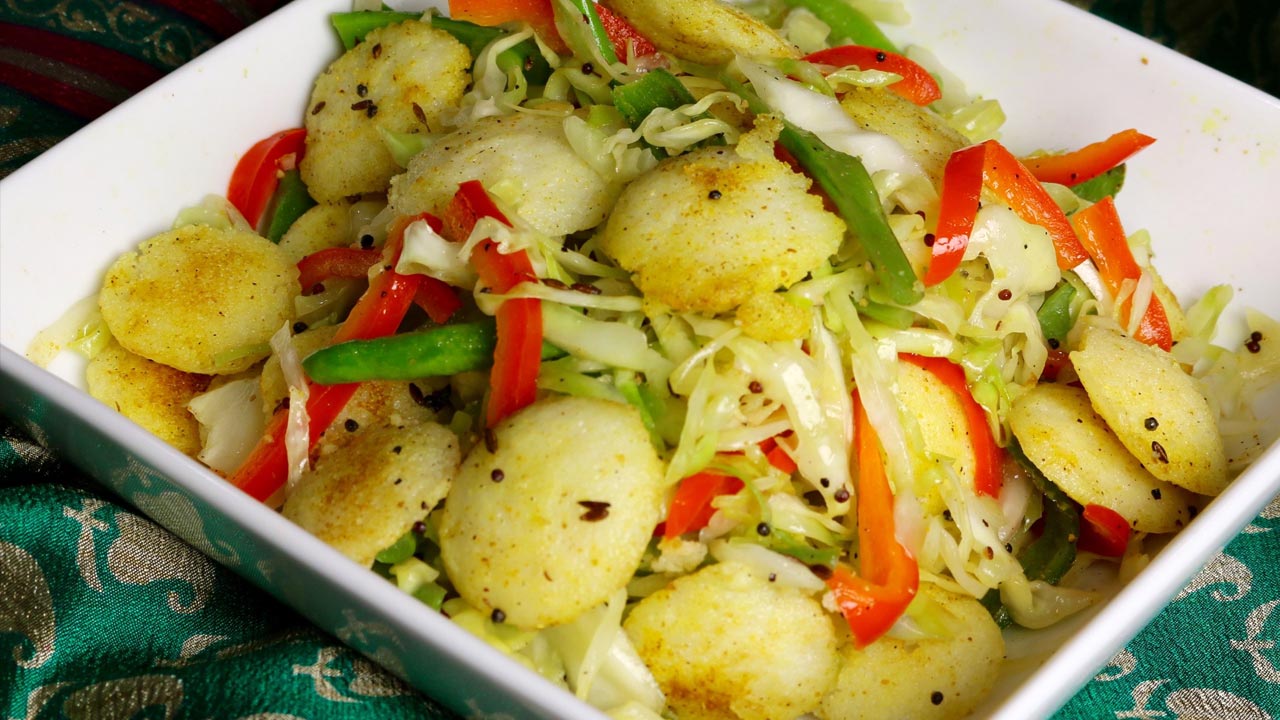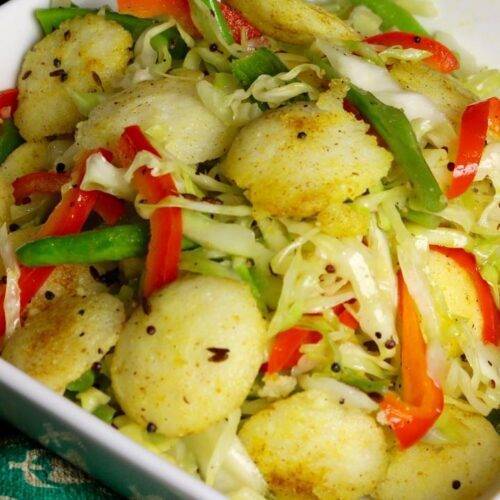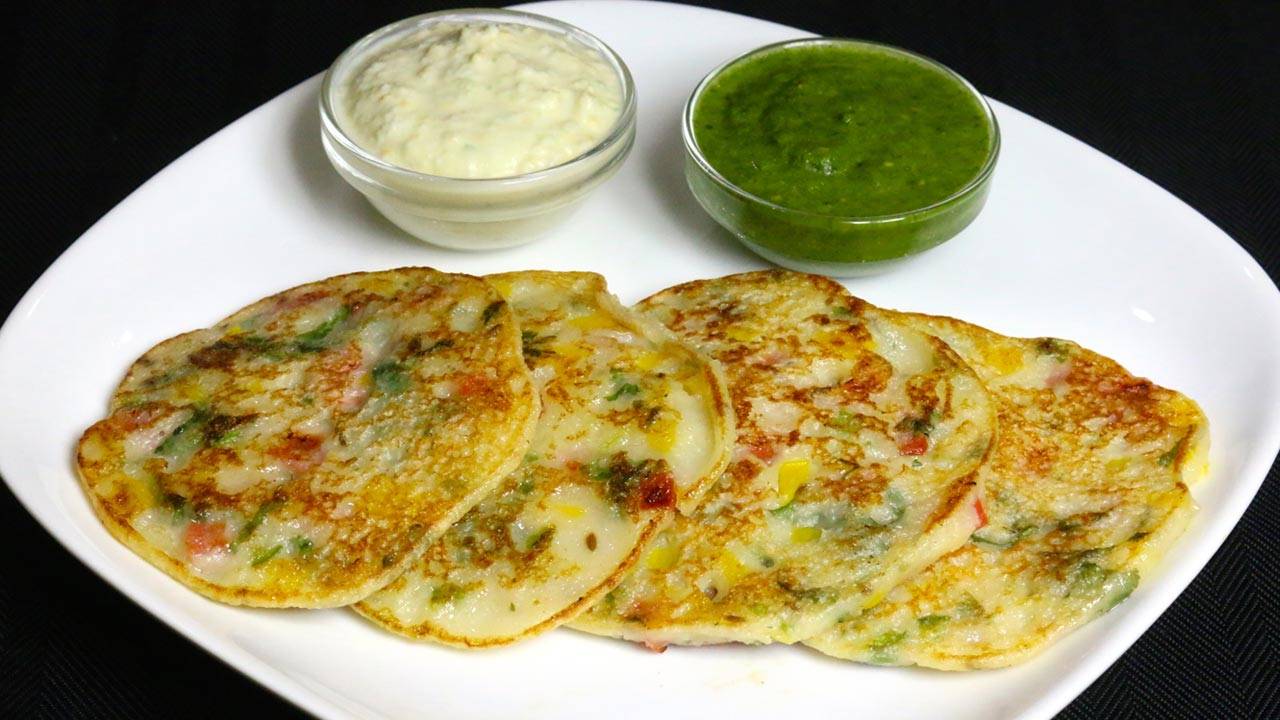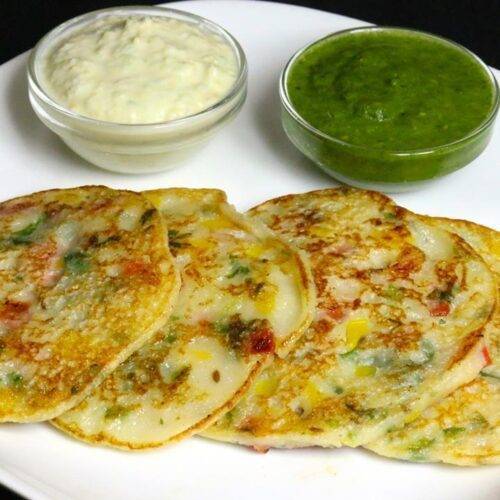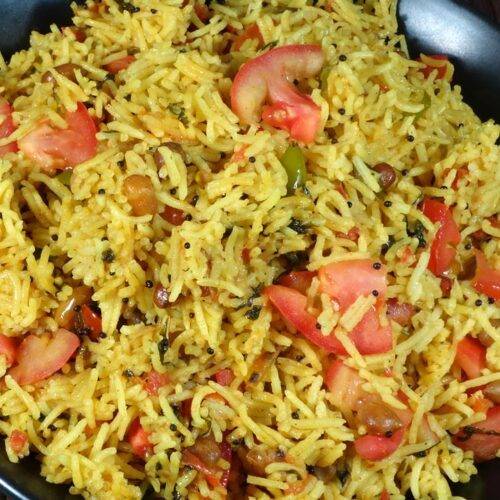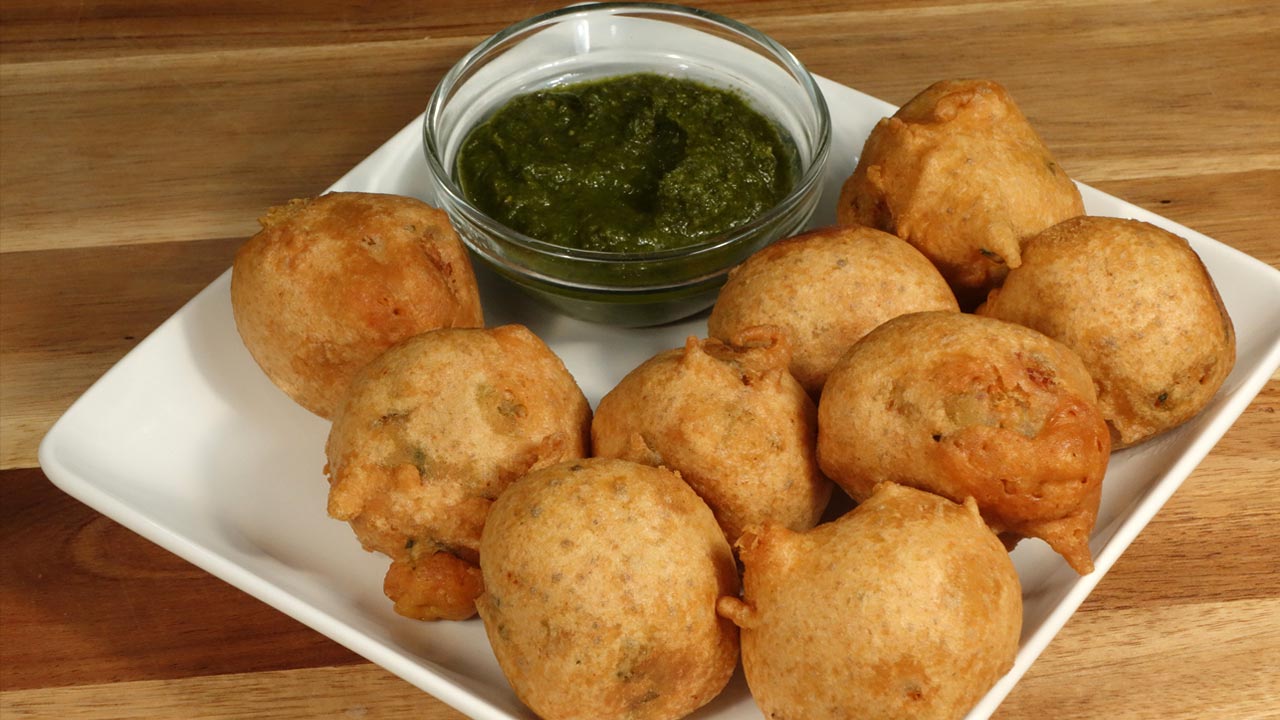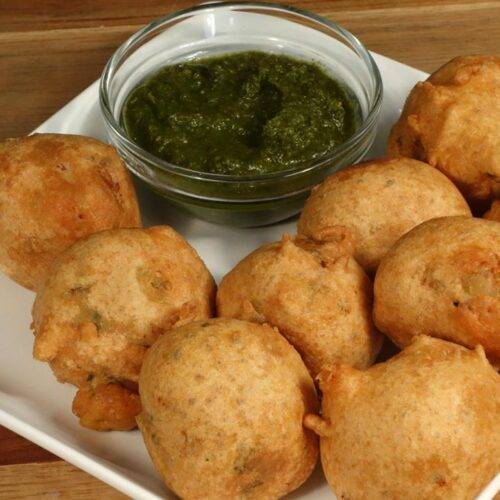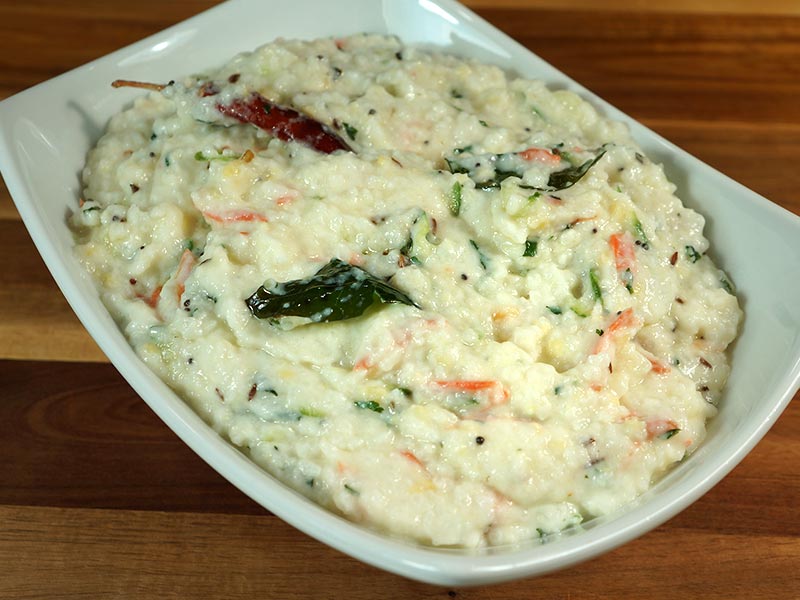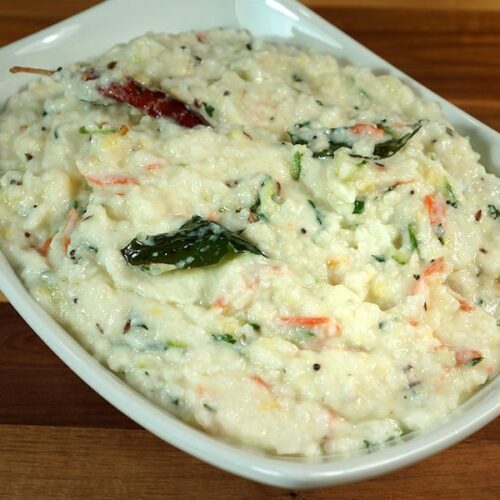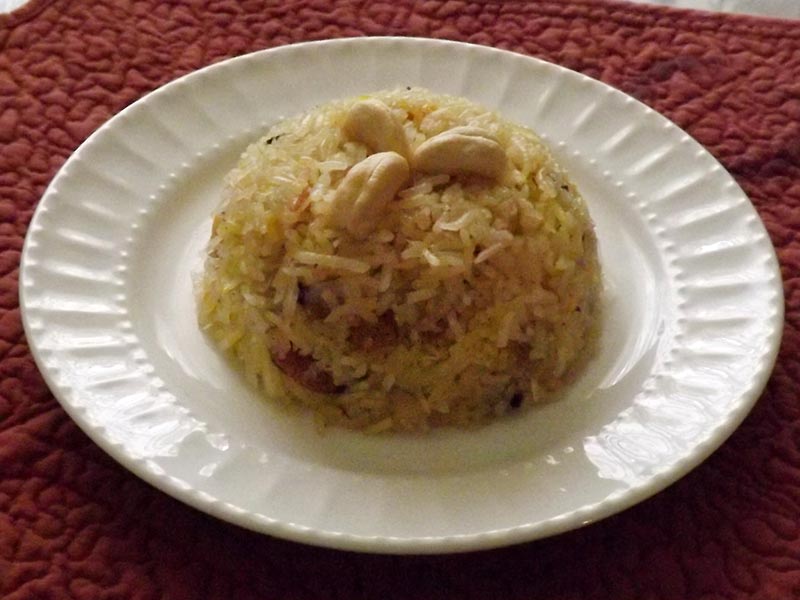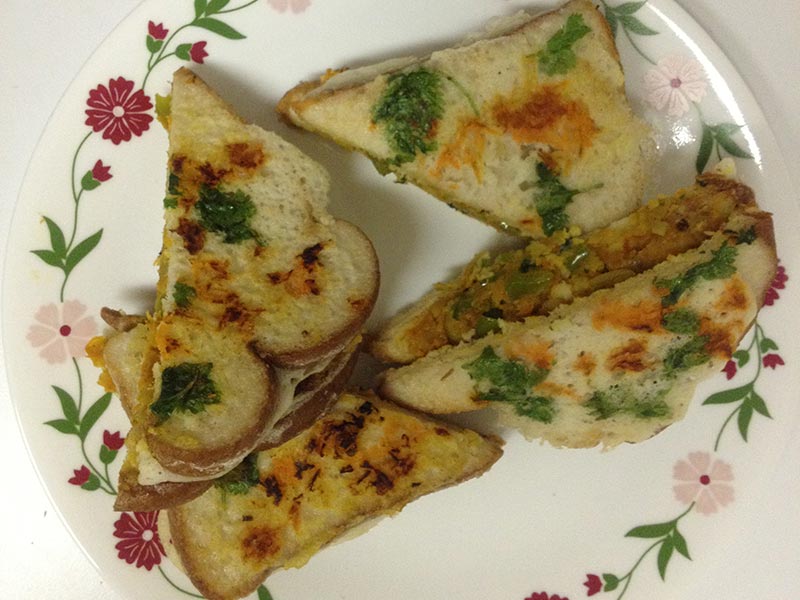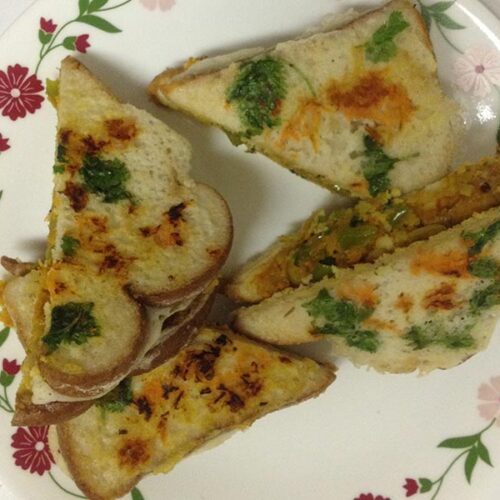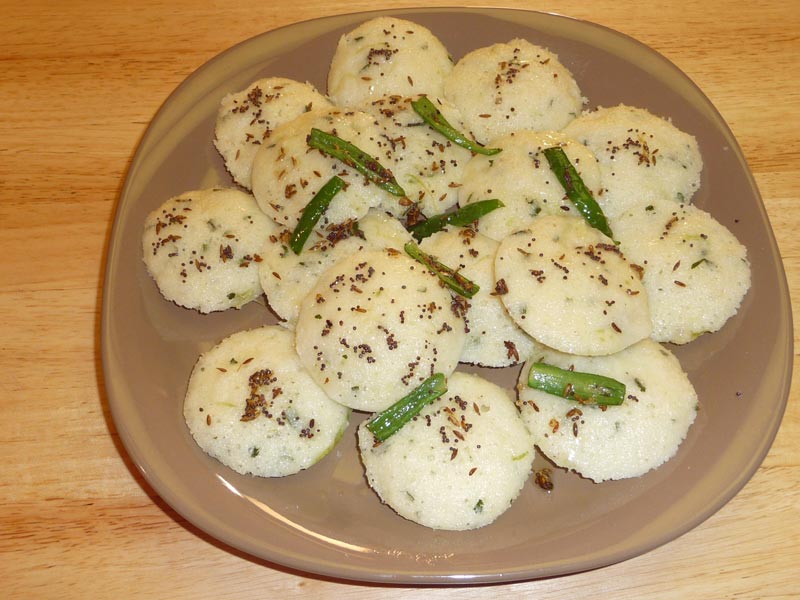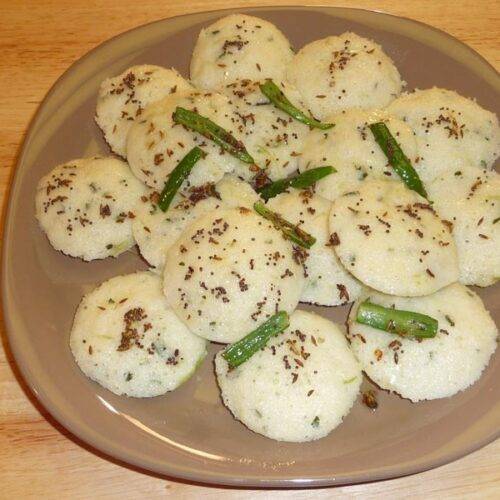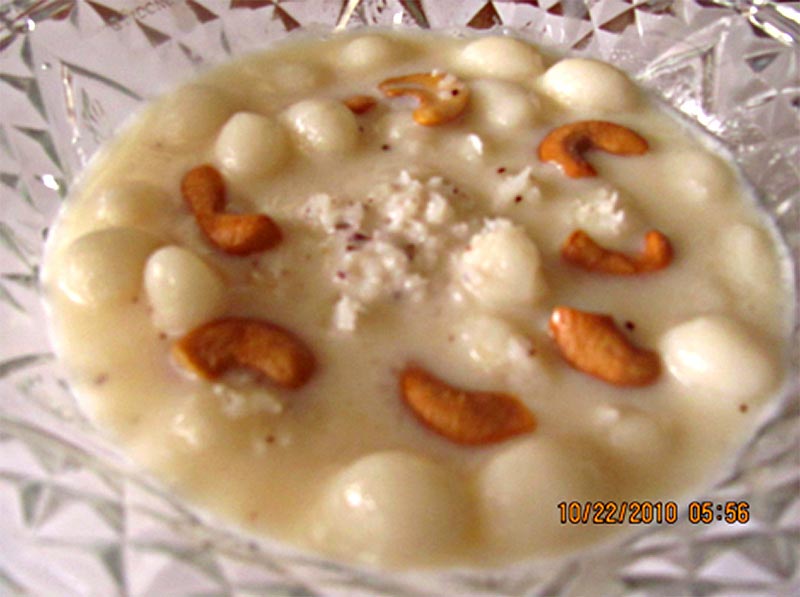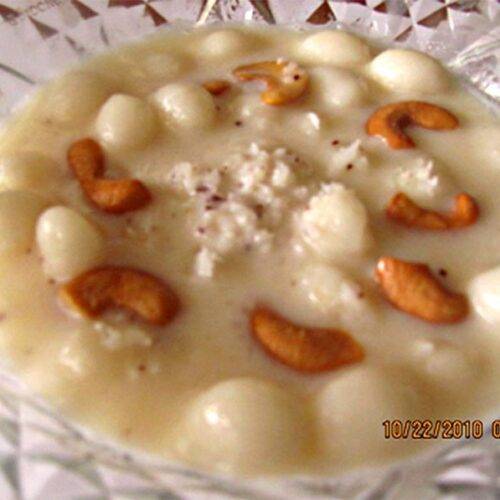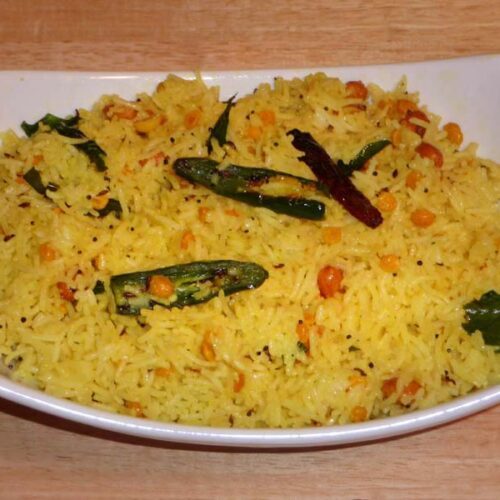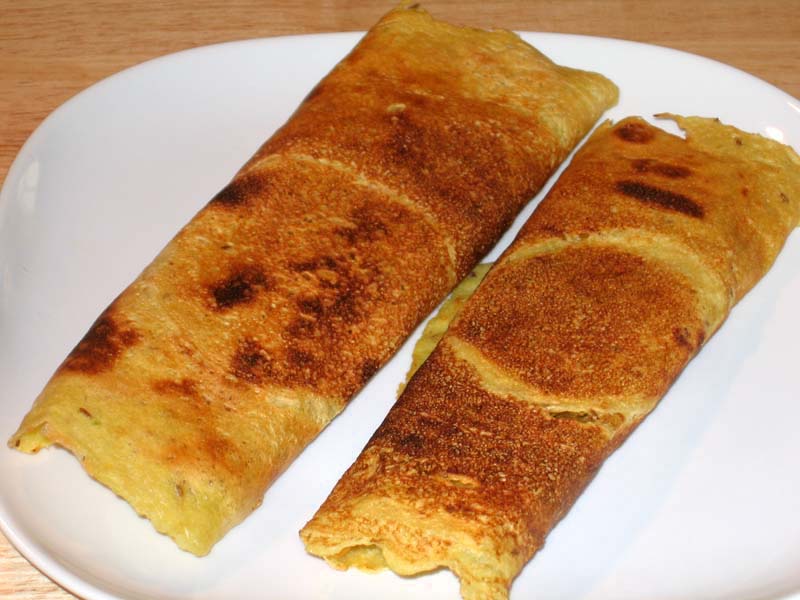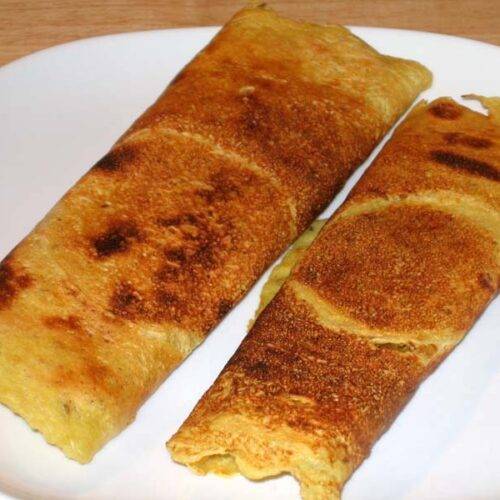Masala Idli
Ingredients
For Idli
- 1 cup coarse sooji (samolinai)
- 1/2 teaspoon salt
- 1/2 cup yogurt (curd, Dahi)
- 3/4 cup water use as needed
- 1 teaspoon ENO (fruit salt)
For seasoning the Idli
- 1 tablespoon oil
- 1/4 teaspoon mustard seed (rai)
- 1/4 teaspoon cumin seeds (jeera)
- 1 green chili seeded and cut in length wise in four
- 1 teaspoon samber powder optional
The seasoning is for half the idlies we are making other use next time
Instructions
Utensils for Making Idlis
- Idli stand – I am using the mini idle rack but you can use regular rack and cut the idli in four pieces.
- Covered pot, large enough to hold the idli stand.
- Alternatively, an egg poacher can work just as well, if you do not have an Idli stand.
For Stir- Fry Salad
- 3 cups cabbage, cut into thin slices
- 1/2 cup red bell pepper cut into thin slices (capsicum, Shimla mirch)
- 1/4 cup green beans cut in half lengthwise and then into pieces 1-1/2” long
- 2 teaspoons oil
- 1/2 teaspoon mustard seeds (rai)
- Pinch of black pepper
- 1/4 teaspoon salt (adjust to taste)
- 1/4 teaspoon sugar
- 1 teaspoon lemon juice
Method to make Idli
- Mix semolina, salt, and yogurt, add water as needed to make a pancake-like batter. Set aside for at least 30 minutes.
- The batter thickens as the semolina absorbs the water. At this point, add a little more water as needed.
- Add approximately 3/4 cup of water to the pot. Check to make sure that the water does not touch the bottom plate of the idli stand. Bring to boil.
- Lightly grease idli plates with oil.
- Add Eno Fruit Salt to the batter and mix well. The mixture will begin foaming. Immediately begin pouring into the Idli trays. Place the stand into the steaming pot.
- Cover the pot and steam idles for about 6-8 minutes on medium heat. Insert a toothpick in the center of one idli. If the toothpick comes out clean, remove the stand from the pot. Do not overcook idles, as they will lose their softness and dry out as they cool.
- Cool for just a few minutes before removing each individual idli. They should come out easily and not stick to the mold. Idles should be spongy and soft.
Seasoning for Idlies
- For this recipe we need to use about half the idlies, save other for next time.
- Heat oil in a saucepan. Add mustard and cumin seeds. When the seeds begin to crack, add the chilies. Stir for a few seconds add the idlies and stir-fry them for 2-3 minutes until idlies are lightly golden brown.
- Sprinkle the samber powder and mix it well gently, assuring idlies will not brake. Turn off the heat.
Stir- Fry Salad
- Heat the oil in frying pan over medium high heat.
- Add mustard seeds, as the seeds crack, add cabbage, bell pepper, and beans. Stir-fry three to four minutes, vegetables should be crisp, do not overcook.
- Turn off the heat. Add salt, sugar, black pepper and lemon juice. Mix well.
- Mix the idlies with stir fry and fold gently. Masala idlies are ready.
- Serve them warm or at room temperature.
Notes
- This is two part recipe and good thing is you can serve them both as a separate dish and they truly taste delicious and when you combine them both that really bumps up the taste factor.
- Idlies can be refrigerated for 4-5 days or freeze them for a month.
Masala Idli Recipe: A Flavorful Twist to Traditional Idli
In this masala idli recipe, we’re adding a delightful twist to the traditional idli by infusing it with aromatic spices and veggies. Masala idli is a popular South Indian snack that tantalizes the taste buds with its savory flavors and comforting texture. If you’re wondering how to make masala idli, fret not! This recipe is simple yet bursting with flavors, making it a perfect choice for breakfast, brunch, or even a light dinner. Let’s dive into the culinary journey of crafting this delectable idli masala recipe.
Step 1: Prepare the Ingredients
Before we embark on our culinary adventure, let’s gather all the ingredients required for this delightful masala idli. You’ll need idli batter, mustard seeds, cumin seeds, asafoetida (hing), green chilies, curry leaves, ginger, bell pepper, carrots, green peas, salt, lemon juice, and cilantro. Ensure all your ingredients are fresh and readily available before you begin.
Step 2: Tempering the Spices
To kickstart the preparation of masala idli, heat oil in a pan over medium heat. Once the oil is hot, add mustard seeds and cumin seeds. Let them splutter, releasing their aromatic flavors into the oil. Next, sprinkle a pinch of asafoetida (hing) for added depth of flavor. This tempering process infuses the oil with the essence of spices, laying the foundation for our flavorful masala.
Step 3: Adding Aromatics and Veggies
Now, it’s time to elevate the flavors further by incorporating aromatic ingredients and vibrant veggies into our masala idli. Add finely chopped green chilies, curry leaves, and grated ginger to the pan. Sauté them for a minute until they become fragrant. Then, toss in bell peppers, carrots, and green peas. Stir-fry the veggies until they turn tender yet retain their crunchiness. The medley of aromatics and veggies adds a burst of color, texture, and nutrients to our dish, making it both visually appealing and wholesome.
Step 4: Mixing in the Idlis
Once the veggies are cooked to perfection, it’s time to introduce our star ingredient – the idlis. Cut the idlis into bite-sized pieces and gently fold them into the aromatic vegetable mixture. Ensure each idli piece is coated evenly with the flavorful masala. Allow the idlis to simmer in the masala for a couple of minutes, allowing them to absorb the flavors and become slightly crisp around the edges.
Step 5: Seasoning and Garnishing
No dish is complete without the perfect balance of seasoning and a sprinkle of fresh herbs. Season the masala idli with salt according to taste and a generous squeeze of lemon juice for a refreshing zing. Garnish the dish with freshly chopped cilantro leaves, adding a pop of color and a burst of freshness to the final presentation.
Step 6: Serving the Masala Idli
Our masala idli is now ready to be served piping hot. Transfer the aromatic concoction to a serving plate and relish it as is or pair it with a side of coconut chutney or tangy tomato chutney for an extra flavor boost. Masala idli makes for a wholesome and satisfying meal that’s sure to please both the palate and the soul.
Tips for Perfect Masala Idli
- For a healthier twist, you can steam the idlis using a combination of rice and lentils or opt for instant idli mix available in the market.
- Customize the masala according to your preference by adding or omitting veggies as per availability and taste.
- Ensure the idlis are not too soft but firm enough to hold their shape when mixed with the masala.
- Experiment with different tempering spices like fenugreek seeds, fennel seeds, or dried red chilies for a unique flavor profile.
Variations of Masala Idli Recipe
- Paneer Masala Idli: Add cubed paneer pieces along with the veggies for a protein-packed version of masala idli.
- Podi Masala Idli: Toss the idlis in a spicy South Indian podi (powder) mixture for an extra kick of flavor.
- Cheese Masala Idli: Sprinkle grated cheese on top of the masala idli before serving for a gooey, indulgent twist.
Benefits of Masala Idli
- Rich in nutrients: Masala idli is packed with essential nutrients from the veggies, making it a wholesome meal option.
- Balanced flavors: The combination of spices and aromatics in masala idli stimulates the senses and satisfies the craving for a flavorful meal.
- Easy digestion: Idlis are steamed, making them light on the stomach and easy to digest, ideal for breakfast or a light dinner option.
Frequently Asked Questions (FAQs)
Q: Can I make masala idli with leftover idlis?
A: Absolutely! Leftover idlis work perfectly for making masala idli. Simply cut them into pieces and follow the recipe from step 3 onwards.
Q: Can I prepare the masala in advance?
A: Yes, you can prepare the masala ahead of time and refrigerate it. When ready to serve, reheat the masala and mix it with freshly steamed idlis.
Q: Can I skip certain veggies in the masala?
A: Of course! Feel free to customize the masala according to your preference by omitting or substituting veggies as per your liking.
Other Recipes on Manjula’s Kitchen
If you’re looking to explore more Indian recipes, appetizers, beverages, and desserts, be sure to check out the following links on Manjula’s Kitchen. Here are some links to recipes on Manjula’s Kitchen official website: khaman (besan) dhokla, rasgulla, gobi (cauliflower) manchurian, aloo tikki (potato patties), malai koftai. These recipes should offer you a flavorful experience straight from Manjula’s Kitchen.

